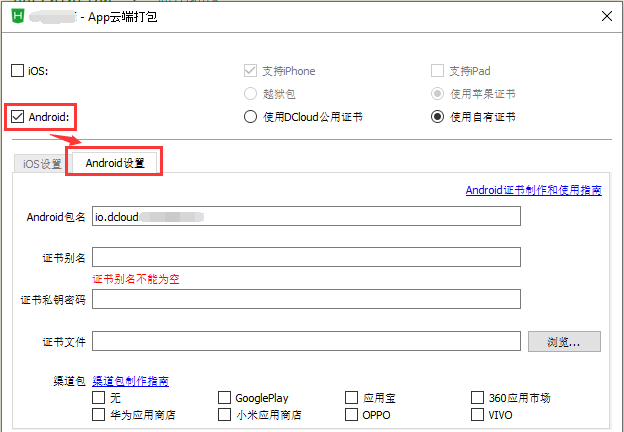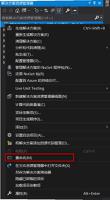自己动手制作MySQLInternalsManualForDash文档

1. 准备工作
1.1 下载MySQL文档
用wget批量、自动下载Internals Manual及MySQL 8.0 Release Notes文档。
[root@yejr.me]# cd /data/mysql-docs[root@yejr.me]# wget -r -p -np -k --no-check-certificat "https://dev.mysql.com/doc/internals/en/index.html"[root@yejr.me]# wget -r -p -np -k --no-check-certificat "https://dev.mysql.com/doc/relnotes/mysql/8.0/en/"[root@yejr.me]# ls -l dev.mysql.comdrwxr-xr-x 3 root root 16Feb2913:25 internalsdrwxr-xr-x 3 root root 19Feb2922:19 relnotes
1.2 构建Python环境
制作Dash docset文档,需要用到Python的beautifulsoup4模块,因此要先安装上。安装beautifulsoup4模块挺简单的,用Python的pip就可以了,如果不知道的话,可以先自行搜索一番。
[root@yejr.me]# pip install beautifulsoup4
此外,还需要sqlite数据库,如果没有的话,也先自行安装,用yum就可以了,也挺方便的。
2. 构建Dash docset环境
2.1 创建docset目录结构,复制文件
[root@yejr.me]# cd /data/mysql-docs/dev.mysql.com/doc/internals/# 以MySQL Internal Manual文档为例,先创建下面的目录[root@yejr.me]# mkdir -p MySQL_Internal.docset/Contents/Resources/Documents/# 复制所有文件到docset目录下[root@yejr.me]# cp en/* MySQL_Internal.docset/Contents/Resources/Documents/
2.2 编辑Info.plist文件
接下来就是要编辑Info.plist文件了,这也是docset的metadata文件了,存储基本信息,以及定义一些配置等。
[root@yejr.me]# cat MySQL_Internal.docset/Contents/Info.plist<?xml version="1.0" encoding="UTF-8"?><!DOCTYPE plist PUBLIC "-//Apple//DTD PLIST 1.0//EN""http://www.apple.com/DTDs/PropertyList-1.0.dtd"><plist version="1.0"><dict><key>CFBundleIdentifier</key><string>MySQLInternalManual</string><key>CFBundleName</key><string>MySQLInternalManual</string><key>DocSetPlatformFamily</key><string>MySQLInternalManual</string><key>dashIndexFilePath</key><string>index.html</string><key>isDashDocset</key><true/></dict></plist>
2.3 生成docset文档索引
Dash的文档索引采用SQLite数据库,SQLite是一个很小巧的、开源的关系型数据库,据说很可能是使用量最大的关系数据库。
先创建docset索引表:
[root@yejr.me]# sqlite3 MySQL_Internal.docset/Contents/Resources/docSet.dsidxSQLite version 3.28.02019-04-1514:49:49Enter".help"for usage hints.sqlite> CREATE TABLE searchIndex(id INTEGER PRIMARY KEY, name TEXT, type TEXT, path TEXT);sqlite> .exit[root@yejr.me]#
然后用一个Python脚本解析所有文档页面文件,并且生成索引记录,写入到 docSet.dsidx 索引文件中。
这步的工作比较重要,因为后面我们阅读文档时,可能会搜索一些关键词,因此需要尽可能把这些关键词都写到索引文件里。
写入时,各个关键词可以分属不同的类型,常见文档中的类型几乎都支持,像Category、Class、Command、Constant、Function、Interface、Keyword、Module、Namespace等,不一一列举了。
我为了图省事,写入索引时,全部都指定为Keyword了,重点是能搜索到这些关键词就好。
脚本蓝本:https://github.com/drbraden/pgdash/blob/master/pgdoc2set.py
先看下解析文档的Python脚本:
[root@yejr.me]# cat dsidx.py#!/usr/local/bin/python3import os, re, sqlite3, sysfrom bs4 importBeautifulSoup, NavigableString, Tagtry:# 指定sqlite数据文件db = sqlite3.connect("MySQL_Internal.docset/Contents/Resources/docSet.dsidx")cur = db.cursor()except:print("Open sidx file failed, exit.")exitdocpath = "MySQL_Internal.docset/Contents/Resources/Documents"# 接收参数,便于逐个解析每个文件doc = "%s"% sys.argv[1];page = open(os.path.join(docpath, doc)).read()soup = BeautifulSoup(page, features="html.parser")any = re.compile(".*")for tag in soup.find_all("a", {"href":any}):# 删除空格及换行name = tag.text.strip()name = name.replace("","")
if len(name) > 0:path = tag.attrs["href"].strip()if path.split("#")[0] notin("index.html", "index.htm", "bookindex.html"):# 插入索引记录sql="INSERT OR IGNORE INTO searchIndex(name,type,path) VALUES ("%s","KEYWORD","%s");"%(name,path);cur.execute(sql)# 最后一次性批量提交db.commit()db.close()
接下来,我们只需逐个解析文档文件即可:
# 扫描文档目录for f in`ls en`do/usr/local/bin/python3 ./docset.py $fdone
最后发现共写入了5600多条记录。
到这里,一个简陋的Dash文档就制作完成了,快和小伙伴们一起分享下成果吧。
P.S,github上已有很多小伙伴在分享他们的成果了:Kapeli/Dash-User-Contributions(https://github.com/Kapeli/Dash-User-Contributions)。
另外,想要图省事直接获取文档的话,后台发送“dash”关键字获取下载链接,因为Oracle MySQL不让非官方途径发布官网文档,所以不方便直接放上来。之前在我网站下载几个文档并放在上面,也加了入口链接,只是为了方便自己阅读,就这样也被要求下线。
本文参考
Dash文档制作教程,https://www.cnblogs.com/xiangzi888/p/4034808.html
Docset Generation Guide,https://kapeli.com/docsets
本文首发 https://mp.weixin.qq.com/s/jhWe_ZHd-3n3OEy9YAJSGw
以上是 自己动手制作MySQLInternalsManualForDash文档 的全部内容, 来源链接: utcz.com/z/533011.html






